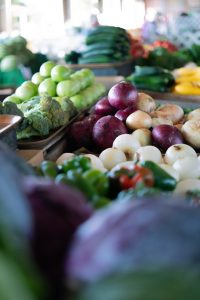In recent years, sustainable business operations are becoming the main focus for many companies, including restaurants. Some large brands have adopted carbon-neutral practices, as well as using recycled packaging to reduce their overall impact on the planet. As a restaurant, it can be tough to figure out how to reduce environmental impact without eating into profit. This is mainly because restaurants usually have tight profit margins and also have the need to stay consistent with their food products and service in order to keep customers. Actions like changing suppliers and the menu could create negative feedback from some. Here are some simple ways to make your restaurant more environmentally friendly and keep up quality.
Source Local Produce
 One of the most effective steps that you can take to cut down your carbon footprint is to source local produce. Having your ingredients shipped or flown in add hundreds, if not thousands, of air miles to your dishes, using masses of fuel and other finite resources to make this long journey. Choosing local farmers, growers, bakers, and more ensures that you keep food miles down dramatically while helping to support independent businesses in your surrounding area.
One of the most effective steps that you can take to cut down your carbon footprint is to source local produce. Having your ingredients shipped or flown in add hundreds, if not thousands, of air miles to your dishes, using masses of fuel and other finite resources to make this long journey. Choosing local farmers, growers, bakers, and more ensures that you keep food miles down dramatically while helping to support independent businesses in your surrounding area.
However, this might mean that you have to alter your menu to suit different seasons, as fruit and vegetables grow in certain periods. Spin it as a positive for food quality and your customers that embrace green practices. It is also possible that you’ll need to raise some of your prices if costs go up from the change. Again, create a marketing campaign that highlights the good you are doing for the environment and local businesses.
Add Plant-Based Options
Meat has obviously been a staple in the human diet for a very long time. However, in the modern-day, many have moved away from consuming it as the main source of protein. Just so you know, animal agriculture now produces more greenhouse gasses than all modes of transport combined, contributing to devastating levels of pollution and waste which worsens every year.
Opting to include whole plant-based options on your menu can help to combat this downward spiral. Vegan recipes that utilize no animal products have a minimal impact on the environment and can be absolutely delicious if prepared right. It takes far less water to grow a field of vegetables than it does to farm a field of cows, so it makes sense to switch over to a more vegan-focused menu!
Aim to Reduce Waste
 Most restaurants produce considerable waste in various forms like packaging, unused food, glass bottles, plastic containers, and paper. One area in which to reduce waste is the food itself, as there are inspiring and inventive options to explore. For example, fruit and vegetable scraps such as cores and peels can be utilized as a natural fertilizer or compost for local farms. Additionally, sites like https://gfcommodities.com/our-services/used-cooking-oils-recycling/ can buy and recycle your used cooking oil to keep it out of the sewers or landfills. Do also consider giving away unused baked goods to local charities or churches. Recycling your waste is a great way to reduce your impact on the environment, as the less you contribute to landfill the better.
Most restaurants produce considerable waste in various forms like packaging, unused food, glass bottles, plastic containers, and paper. One area in which to reduce waste is the food itself, as there are inspiring and inventive options to explore. For example, fruit and vegetable scraps such as cores and peels can be utilized as a natural fertilizer or compost for local farms. Additionally, sites like https://gfcommodities.com/our-services/used-cooking-oils-recycling/ can buy and recycle your used cooking oil to keep it out of the sewers or landfills. Do also consider giving away unused baked goods to local charities or churches. Recycling your waste is a great way to reduce your impact on the environment, as the less you contribute to landfill the better.
 Women's Life Link Be Well, Be Happy, Be YOU!
Women's Life Link Be Well, Be Happy, Be YOU!




